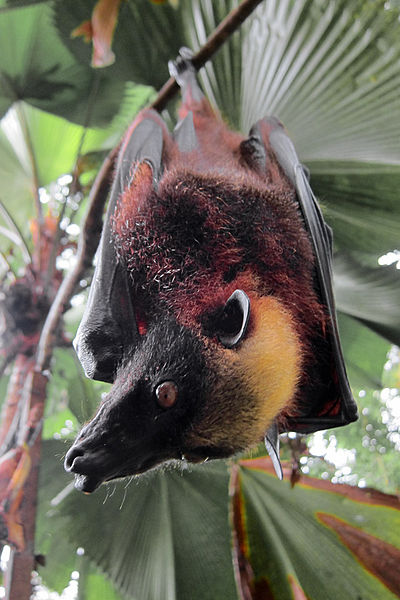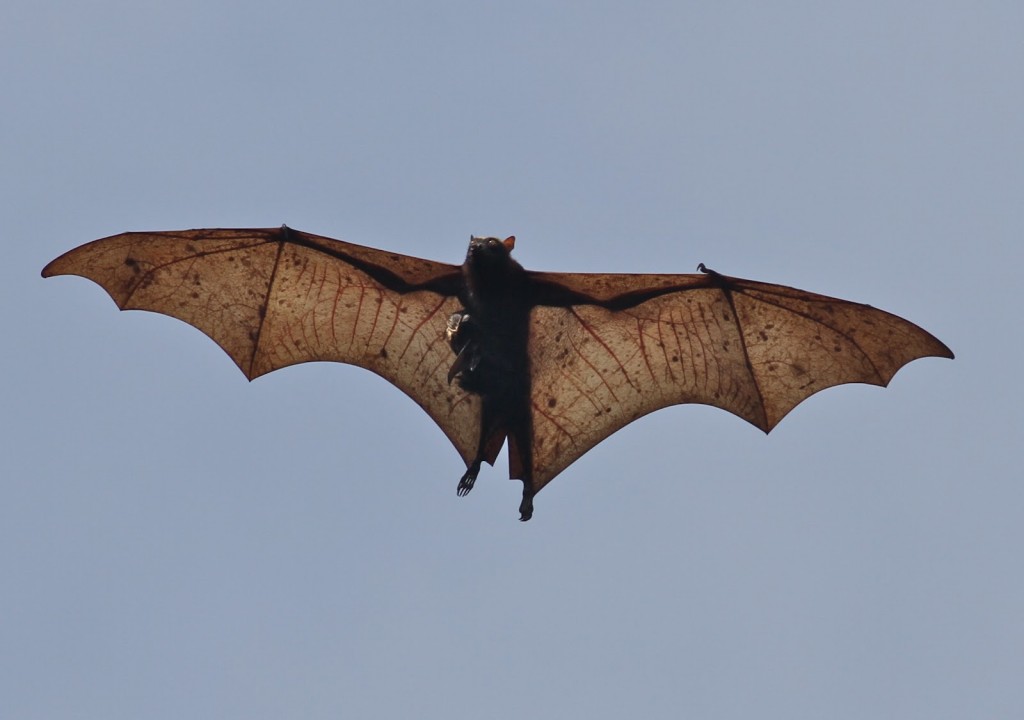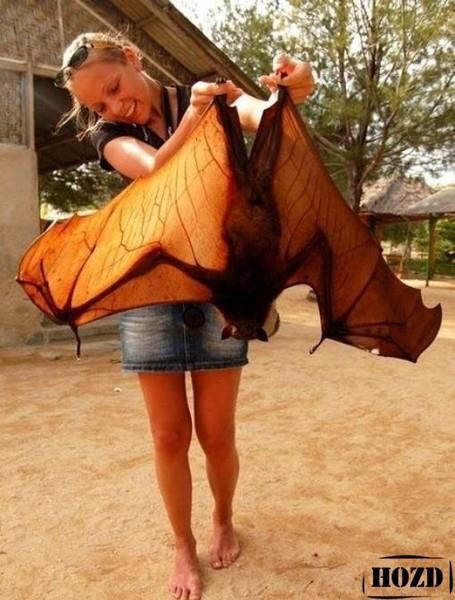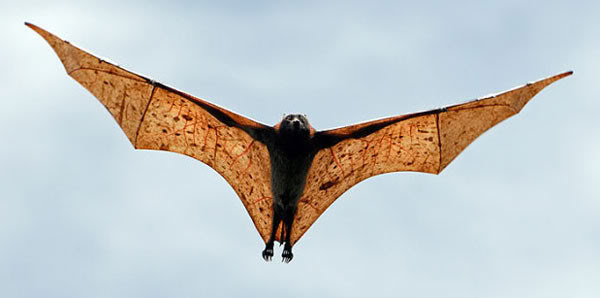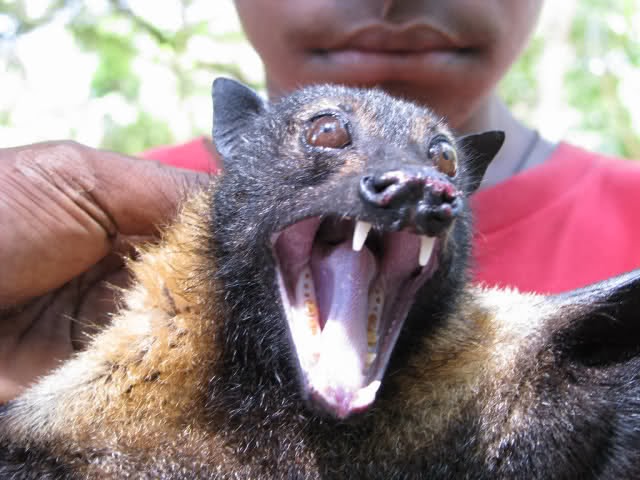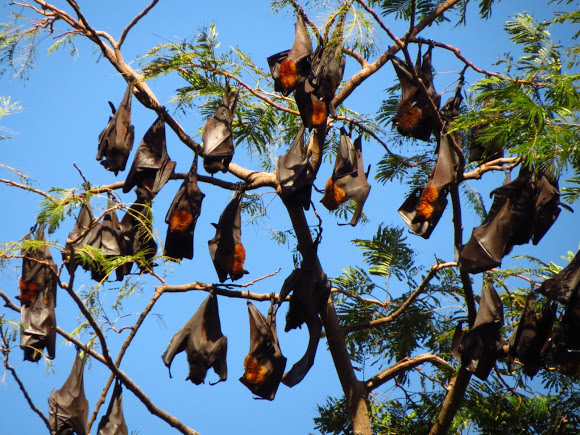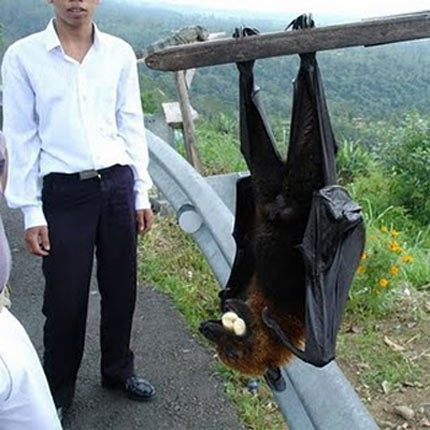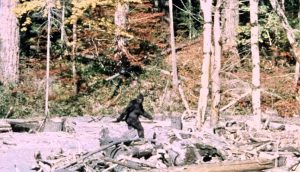World’s Biggest Bat: Giant Golden-Crowned Flying Fox
This benign behemoth of the skies lives in the Philippines and, unfortunately, as with most large mammals in the region, it’s facing extinction through deforestation and poaching. The giant golden-crowned flying fox (Acerodon jubatus), also known as the golden-capped fruit bat, have a wingspan of 1.5–1.7 metres (4ft 11in – 5ft 7in) and weigh in at 0.7–1.2 kilograms (1.5–2.6 lb).
In other words: Big. (NOTE – There are some other bat species that are similar in size but not many). Here’s one carrying a baby:
The giant golden-crowned flying fox only lives in forested areas and only uninhabited forest will do. So, with declining forest cover and inhabited areas ever-growing, the giant golden-crowned flying fox’s days may be numbered. The IUCN red list of endangered species estimates their numbers have dropped by 50% in the last 30 years.
You might think a beast of this girth would carry off goats for supper or suck the blood of infants, but it actually prefers figs. Because giant golden-crowned flying fox eat large quantities and fly as far as 25 miles per night, they are considered important for seed distribution within the forests of the Philippines. Consequently, if they were to go, it would be another important link in the ecosystem gone.
Not much is known about reproduction in the giant golden-crowned flying foxes, they appear to have two breeding seasons per year but the females only get pregnant during one of them.
When the flying fox’s numbers were healthier, they would (literally) hang around in colonies of up to 150,000 individuals. This helped them keep warm and safe from predators. On the minus side, it also made them very easy to spot if you happened to be a hunter. The noise and smell must have been pretty unmistakable. According to local wildlife hunters the bats are considered a good beer snack and can be sold for about 20-40p each.
The golden-crowns have already disappeared from some of the smaller islands and conservation efforts are now underway. It’s difficult to know exactly how to help them as so little is known about this mighty winged mammal. Hopefully we can learn enough about them to save them before it’s too late.
If you want to read about some non-mammalian winged critters click here:

